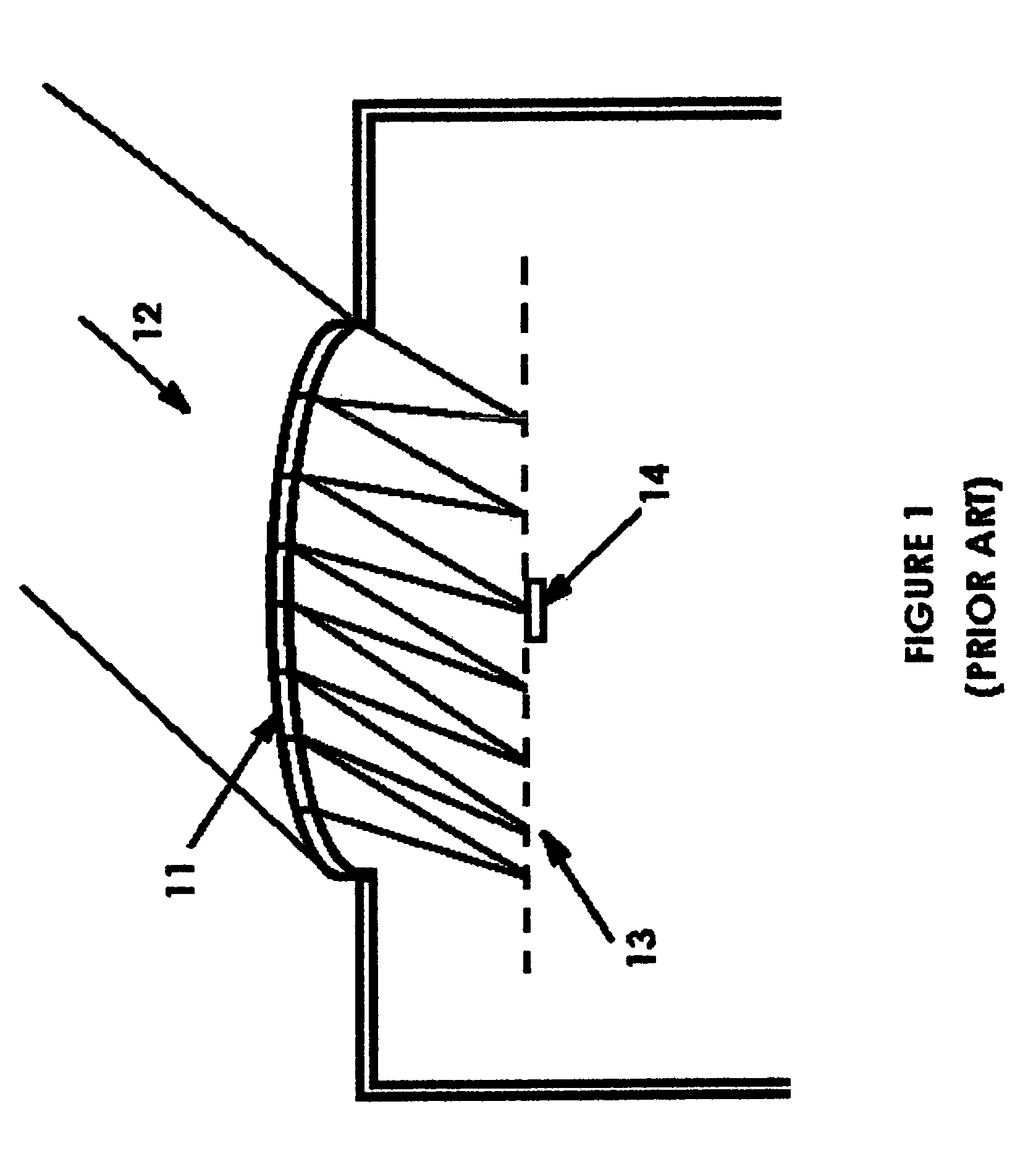Motion detectors and occupancy sensors with improved sensitivity, angular resolution and range
a motion detector and occupancy sensor technology, applied in the field of passive infrared motion detectors and occupancy sensors, can solve the problems of inability to detect horizontal radial motion (e.g. motion directly towards or away from the detector), and achieve the effect of improving increasing the sensitivity and range of motion detectors, and not decreasing the angular resolution of the system
- Summary
- Abstract
- Description
- Claims
- Application Information
AI Technical Summary
Benefits of technology
Problems solved by technology
Method used
Image
Examples
Embodiment Construction
[0039]Turning now to the drawings, in which like reference numerals identify similar or identical elements throughout the several views,
[0040]FIG. 1 shows the input section of a typical passive infrared motion detector / occupancy according to prior art. A Fresnel lens array 11 spans the entrance aperture. Each element of the Fresnel lens array 11 intercepts a small fraction of the input infrared radiation 12 incident from some particular direction and focuses it to a spot 13 in the focal plane of that element. This leads to a number of focal spots equal to the number of elements of the Fresnel lens array 11. For simplicity we have shown all of the focal spots in one plane. If the source of the infrared radiation is moving, the angle of incidence of the incident radiation changes and the system of focal spots moves across the active area of a detector 14. Thus, as the source moves, the electrical output of the detector changes abruptly as a spot moves onto or off of the active area of...
PUM
 Login to View More
Login to View More Abstract
Description
Claims
Application Information
 Login to View More
Login to View More - R&D
- Intellectual Property
- Life Sciences
- Materials
- Tech Scout
- Unparalleled Data Quality
- Higher Quality Content
- 60% Fewer Hallucinations
Browse by: Latest US Patents, China's latest patents, Technical Efficacy Thesaurus, Application Domain, Technology Topic, Popular Technical Reports.
© 2025 PatSnap. All rights reserved.Legal|Privacy policy|Modern Slavery Act Transparency Statement|Sitemap|About US| Contact US: help@patsnap.com



